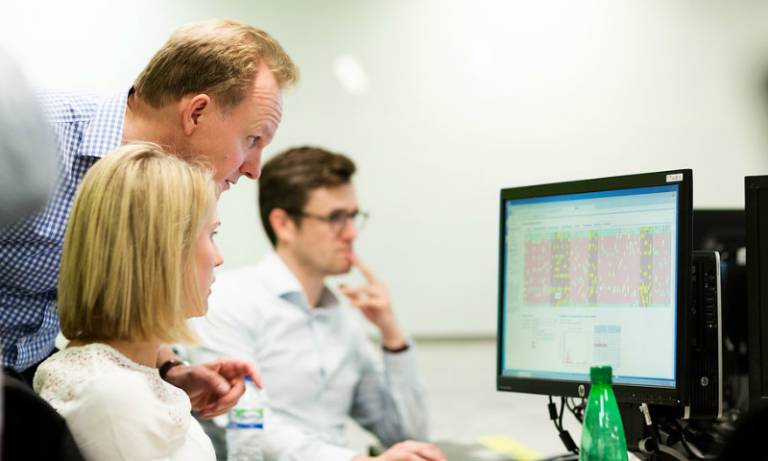Making & using video for teaching: Professor Andrea Sella's advice
Professor Andrea Sella (UCL Chemistry) discusses the various ways in which creating his own teaching videos help him to “shake things up and make things different.”

23 July 2015
This interview is part of the ‘Lecturers on Video’ research project for Digital Education and Digital Media. The project, conducted in 2015, investigated how and why lecturers use video and what their future video requirements are for successful student teaching. A questionnaire was developed and an education producer, Dr Mike Howarth was commissioned to produce the content for the UCL Lecturers on Video research project.
Everything I’ve done has been a spontaneous response to a particular problem
“I started using video really because what I wanted to do was to in a sense provide richer material than what I could provide through print or on the other hand, classic lectures or seminars alone .
These are kind of stand-alone resources that the students might be able to use either to prepare for a much more interactive type of session like lecture flipping, or alternatively, at the end of a section to really provide summation, a kind of broad brush picture of what I think is important about the material.
The message is the important thing
The kinds of videos I've made have really ranged from something done outdoors in a field or whatever using a camera and some sort of selfie stick or tripod, all the way down to something very, very basic; simply making a sound recording. In many ways I would regard those really as being a continuum, which goes from something which is rather more elaborate to something which you can really do from your desk. I don't think we should be too precious about distinguishing between audio and video and whether you capture this or whether capture that.
In the end, it's really the message which is the important thing and the medium may be more or less elaborate.
Try it out and see what works for you
I think the most important piece of advice that I will give to people is to realise that first of all you are not speaking to your peers. You’re actually speaking to students, and if you talk to students - in fact even with your peers - and you asked them how had they learnt about a camera or latest piece of software or whatever, almost they say invariably. “We went to YouTube”.
If you look at a lot of YouTube videos, the production values are not necessarily that brilliant. They are often quite spontaneous and off-the-cuff. One thing you can try, is to be different from the slightly more formalised setting.
My feeling is get out and record something - try it out and see what works for you and what you are comfortable with, and then how you can find ways of actually hooking students.
A great interaction with graduate students who will let you try things out
One thing that I been playing with at the moment is trying to make the Point of View, almost instructional, videos to go alongside some of the instruction manuals. For that it turns out that actually Go Pro works astonishingly well. The great thing is that students in your department will have that kind of kit.
What I've done is spread the word through Facebook or Twitter: “Has anyone got a Go Pro that I could borrow for a couple days?" and sure enough, one turns up. It's lovely to discover that interaction with graduate students who will let you try stuff."
 Close
Close

